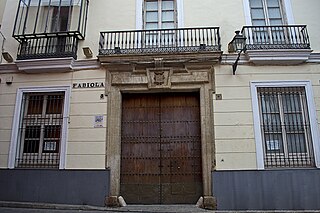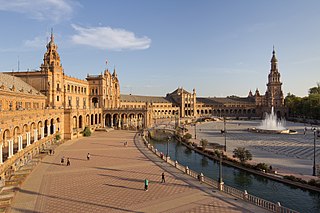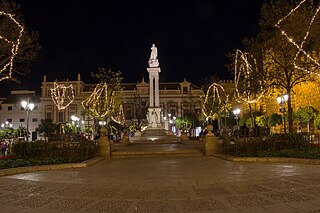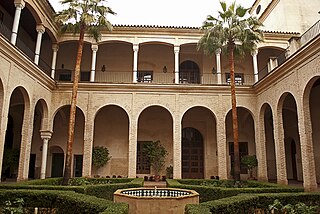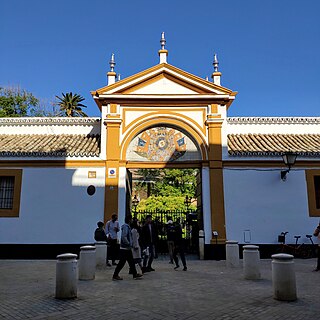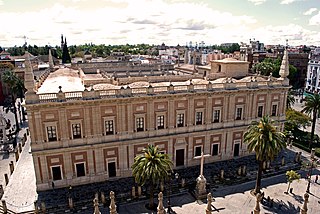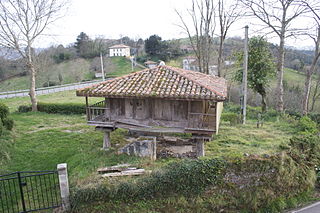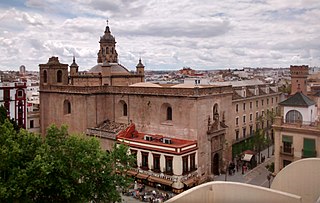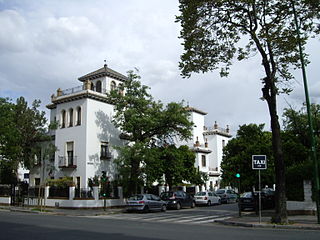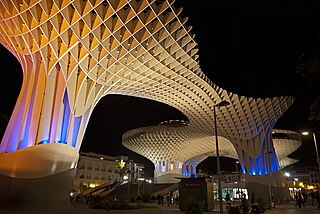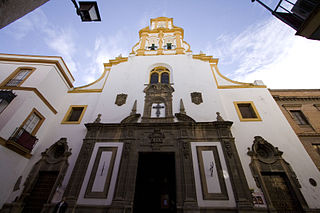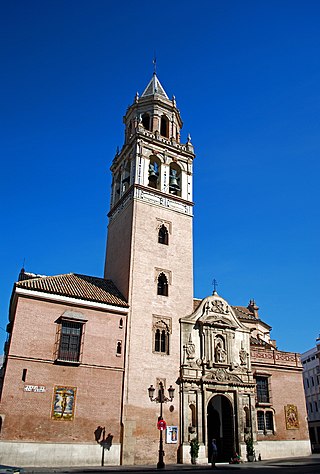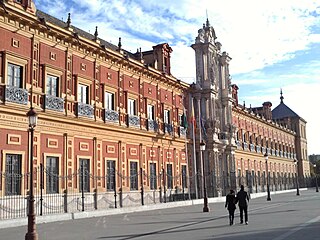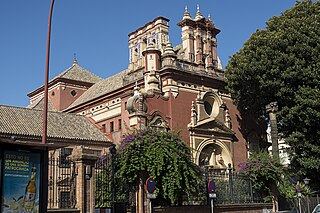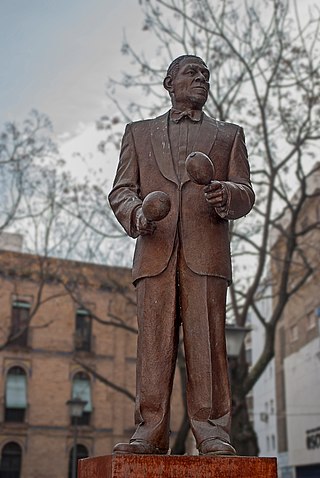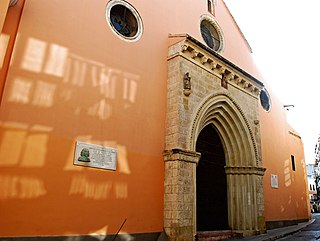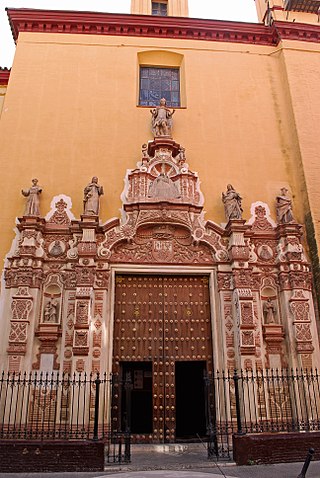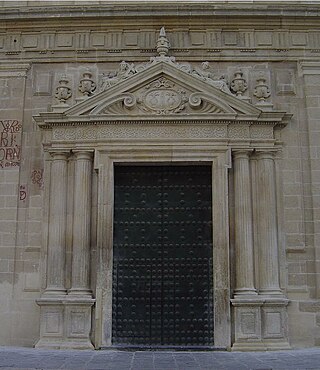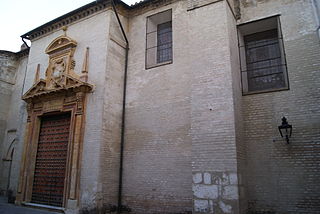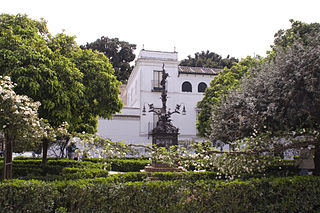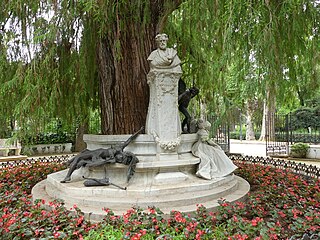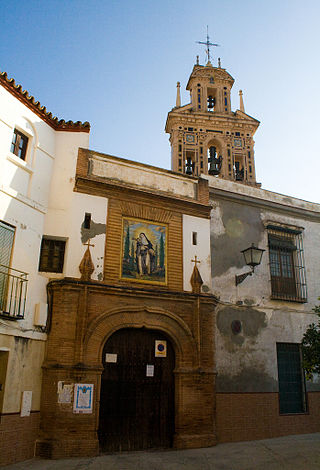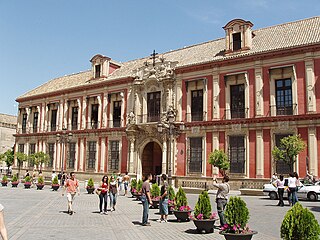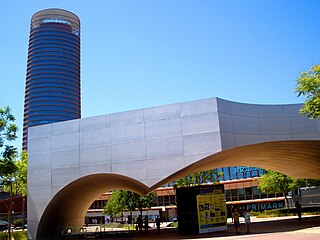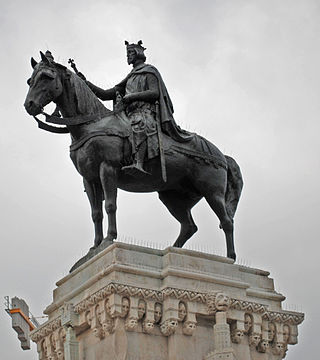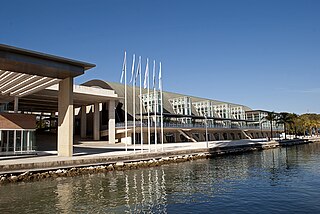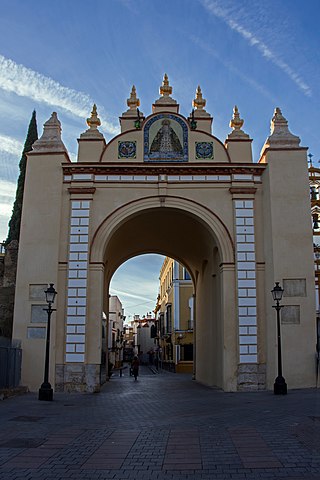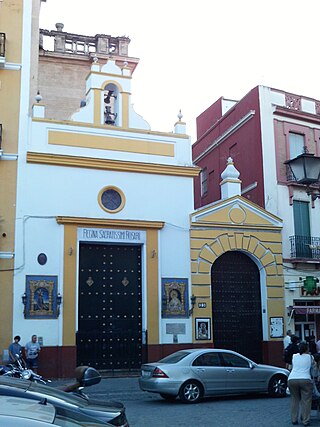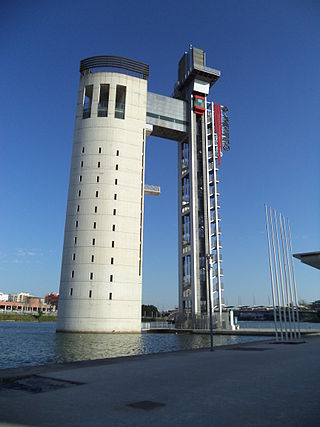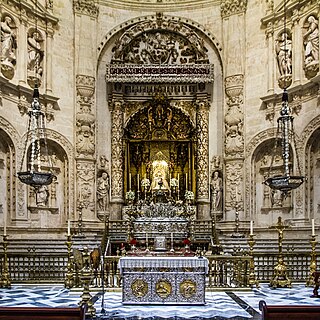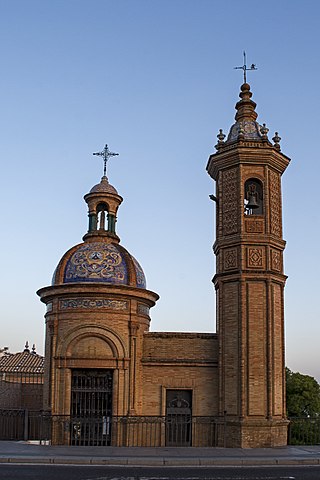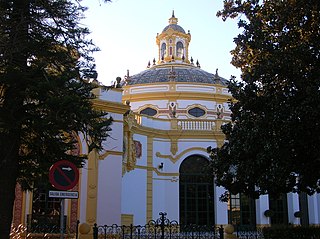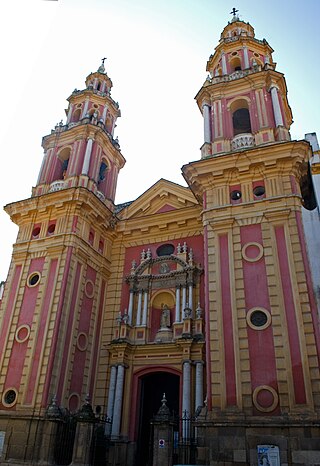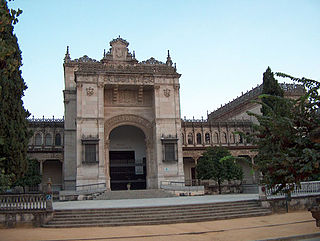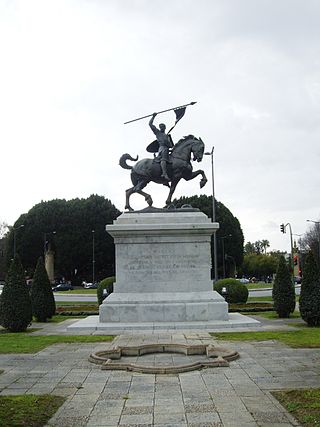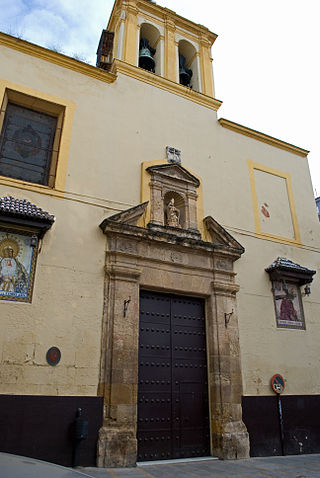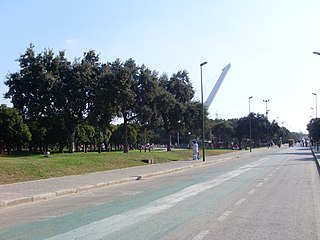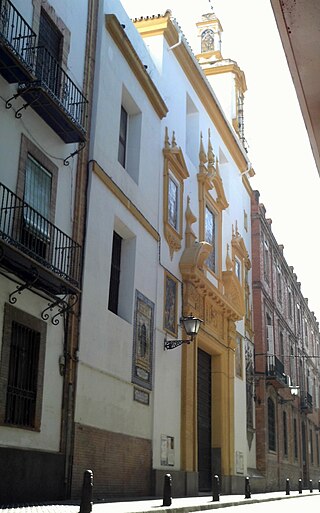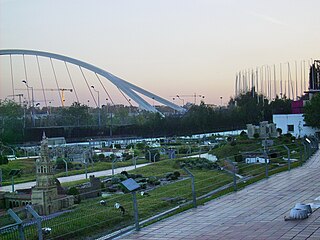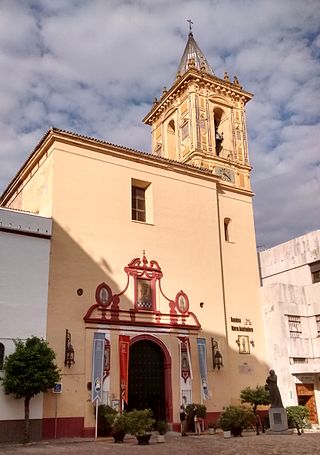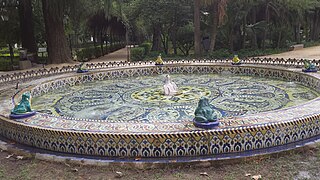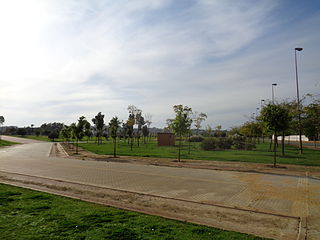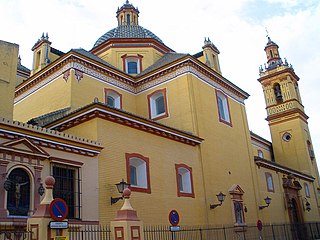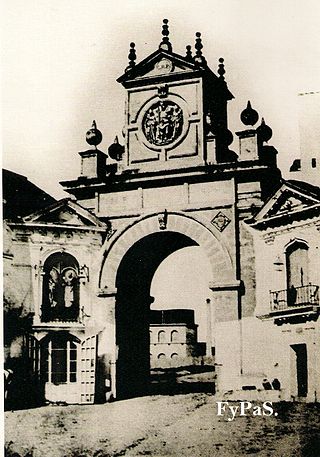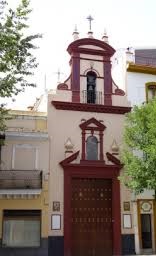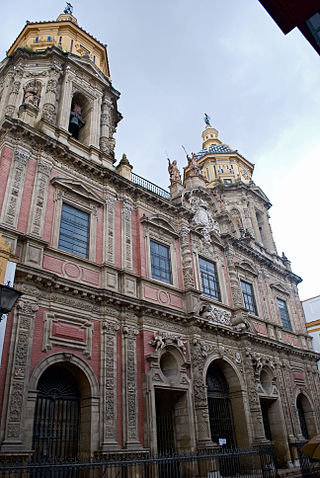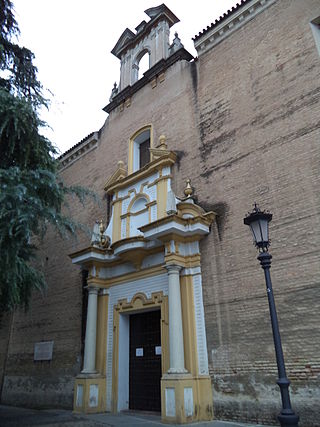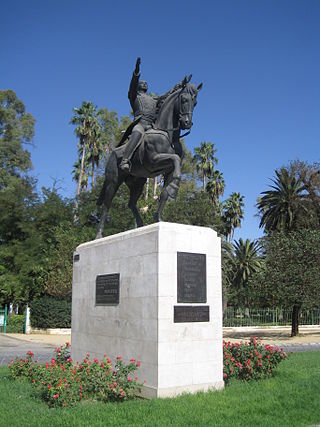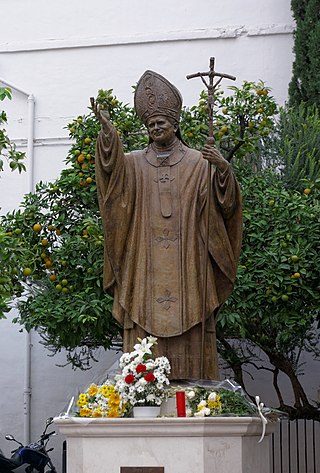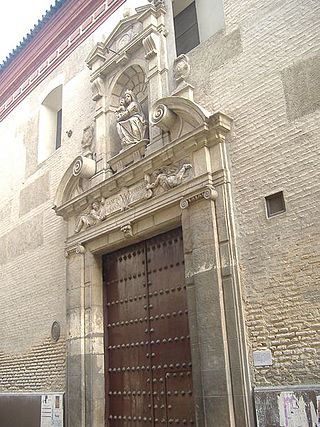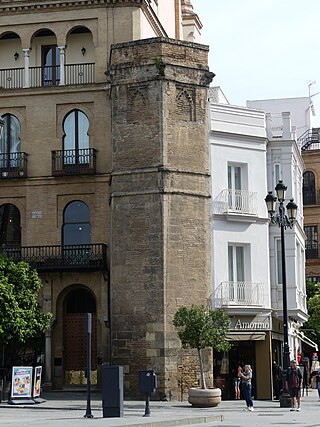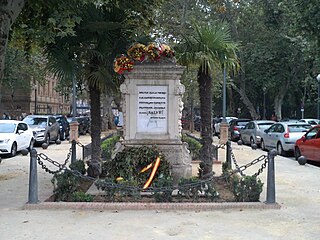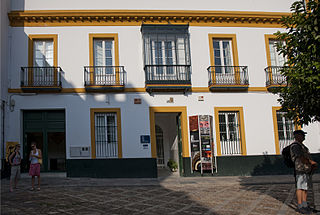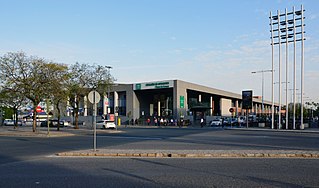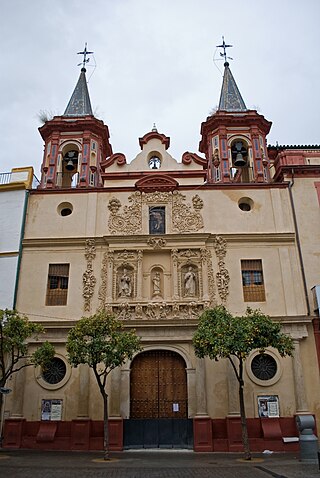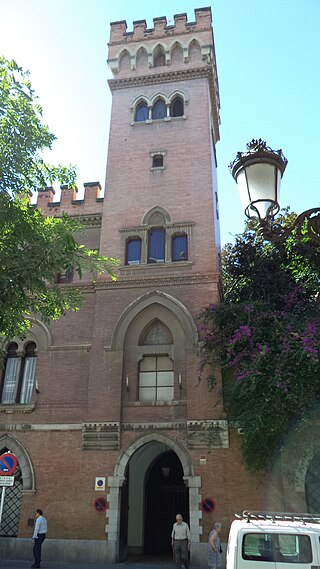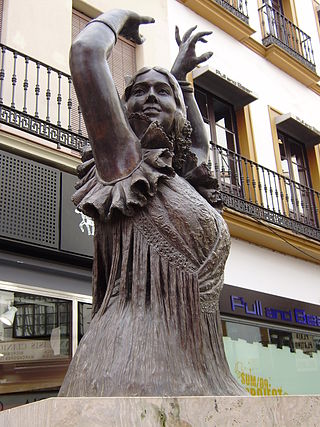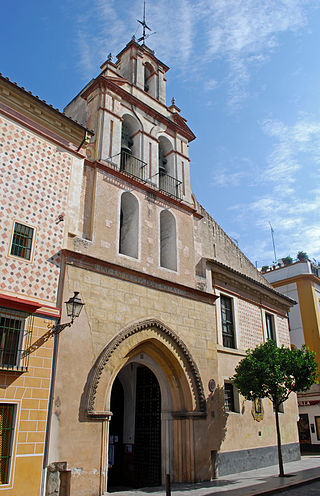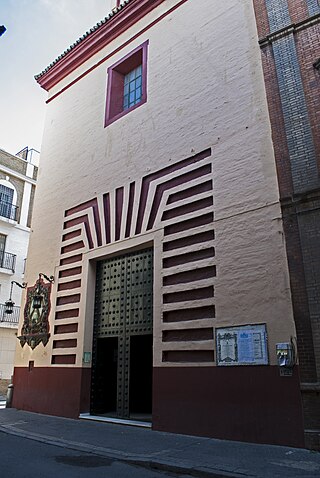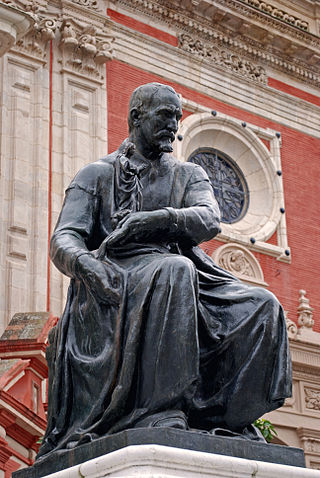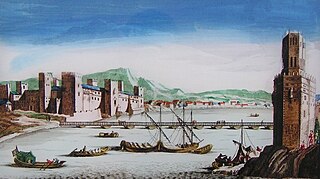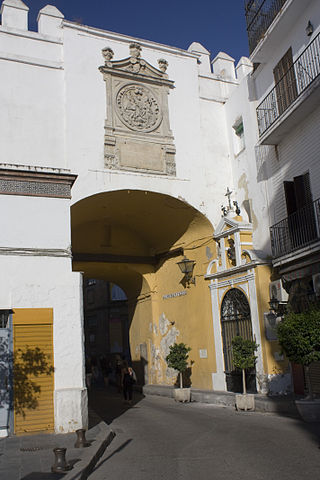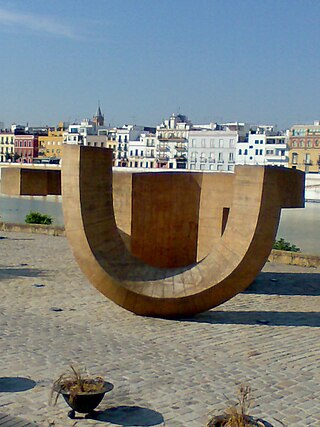79 Sights in Seville, Spain (with Map and Images)
Legend
Premium Sights
Book tickets, guided tours and activities in Seville.
Guided Free Walking Tours
Book free guided walking tours in Seville.
Welcome to your journey through the most beautiful sights in Seville, Spain! Whether you want to discover the city's historical treasures or experience its modern highlights, you'll find everything your heart desires here. Be inspired by our selection and plan your unforgettable adventure in Seville. Dive into the diversity of this fascinating city and discover everything it has to offer.
Sightseeing Tours in SevilleActivities in SevilleThe Museum of Flamenco Dance of Seville is located in the heart of the city, in the Barrio de Santa Cruz; between the well-known Plaza de la Alfalfa and the Cathedral. Almost the entire Museum is dedicated to one of the artistic expressions that has had the most roots and importance in the culture of Andalusia, such as Flamenco dance. It is the first, and only museum in the world known to date, dedicated to this art. Visitors from all over the world come to learn about the origins and evolution of a centuries-old tradition and culture.
2. Casa Fabiola
Casa Fabiola is a historic building in the San Bartolomé neighborhood of the Casco Antiguo district of Seville, Andalusia, Spain. It was a private home and the hostelry of the convent of Madre de Dios. It is the birthplace of Cardinal Nicolás Wiseman, author of the novel Fabiola, which gives the building its name.
3. Costurero de la Reina
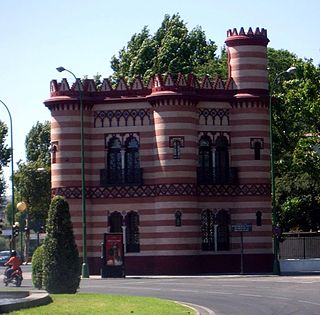
The Costurero de la Reina is a building constructed in the late nineteenth century in the gardens of the Palace of San Telmo, now the Maria Luisa Park in Seville, Spain. This unique building takes the form of a small hexagonal castle with turrets at the corners.
4. Market

Sevilla-San Bernardo, popularly known as Cádiz station, was a railway station located in the Spanish municipality of Seville that was operational between 1902 and 1991. It took its name because it was located in the Seville neighborhood of San Bernardo, within the district of Nervión.
5. Giraldillo
The Giraldillo is the popular name given to the sculpture of a female form that crowns the Giralda in Seville. It received the names of Faith, Triumph of the Church, Colossus of Victorious Faith or Allegory of the Strength of Faith. It was made in 1568 by Bartolomé Morel.
6. Plaza de España
The Plaza de España is a plaza in the Parque de María Luisa, in Seville, Spain. It was built in 1928 for the Ibero-American Exposition of 1929. It is a landmark example of Regionalism Architecture, mixing elements of the Baroque Revival, Renaissance Revival and Moorish Revival (Neo-Mudéjar) styles of Spanish architecture.
7. Plaza del Triunfo
The Plaza del Triunfo in the Spanish city of Seville is located on the axis of a group of buildings declared World Heritage Sites in 1987: the General Archive of the Indies, the Royal Alcazar of Seville and the Cathedral of Seville.
8. Palacio de los marqueses de la Algaba
The Palace of the Marquis of La Algaba is a historic building in the city of Seville, Andalusia, Spain. It is one of the best exponents of civil Mudejar architecture in the city. It houses the Mudéjar Art Center of Seville.
9. Palacio de las Dueñas
Palacio de las Dueñas is a palace in Seville, Spain, currently belonging to the House of Alba. It was built in the late 15th century in the Renaissance style with Gothic and Moorish influences. The palace is one of the major historic homes of great architectural and artistic heritage in the city. The poet Antonio Machado was born here, as were Carlos Falcó, 5th Marquess of Griñón, and the Marquess of Castel-Moncayo. On October 5, 2011, Cayetana Fitz-James Stuart, 18th Duchess of Alba, married her third husband here. The palace became a national monument on June 3, 1931.
10. General Archive of the Indies
The Archivo General de Indias, often simply called the Archive of the Indies, was created by Carlos III and inaugurated in 1785. It is housed in the former merchant guild building in Seville, Spain, built in the late 16th century. It became the repository of archival materials documenting the history of the Spanish Empire in the Americas and Asia. The building was designed by Juan de Herrera; it is an Italianate example of Spanish Renaissance architecture. This structure and its contents were registered in 1987 by UNESCO as a World Heritage Site, together with the adjoining Seville Cathedral and the Alcázar of Seville.
11. Alcázar of Seville
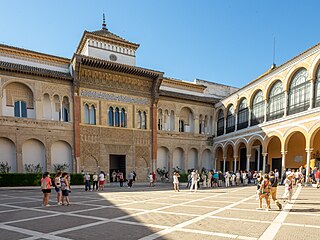
The Alcázar of Seville, officially called Royal Alcázar of Seville, is a historic royal palace in Seville, Spain. It was formerly the site of the Islamic-era citadel of the city, begun in the 10th century and then developed into a larger palace complex by the Abbadid dynasty and the Almohads. After the Castilian conquest of the city in 1248, the site was progressively rebuilt and replaced by new palaces and gardens. Among the most important of these is a richly-decorated Mudéjar-style palace built by Pedro I during the 1360s.
12. Hórreo
An hórreo is a typical granary from the northwest of the Iberian Peninsula, built in wood or stone, raised from the ground by pillars ending in flat staddle stones to prevent access by rodents. Ventilation is allowed by the slits in its walls.
13. Iglesia de la Anunciación
The Church of the Annunciation is a Catholic church in Seville. It has in its crypt the pantheon of Illustrious Sevillians, where Gustavo Adolfo Bécquer is buried, among other figures. It is located on Calle Laraña, next to the Faculty of Fine Arts of the University of Seville.
14. Heliópolis
Heliopolis is a residential neighborhood of Seville, whose name means "City of the Sun" in Greek. It was designed by the architect Fernando de Escondrillas y López de Alburquerque in 1929 on the occasion of the Ibero-American Exhibition in Seville. Its single-family homes are in the regionalist style.
15. Iglesia de Santa Marina
The Church of Santa Marina is a Catholic parish in Seville. It is of Gothic-Mudejar architecture. It is one of the oldest churches in the city. Its construction dates back to around 1262. It is the canonical headquarters of the Brotherhood of the Holy Cross and the Holy Resurrection, which processions on Easter Sunday.
16. Setas de Sevilla
Setas de Sevilla or Las Setas, initially titled Metropol Parasol, is a large, predominantly wood structure located at La Encarnación square in the old quarter of Seville, Spain. It accommodates a traditional market, restaurants, a performance square, archaeological museum — and 'rooftop' terrace with a panoramic view of Seville's old city.
17. Parroquia de Santa Cruz
The church of Santa Cruz is a Catholic temple located on Mateos Gago Street in the Santa Cruz neighborhood of Seville. The construction of the temple was completed in the eighteenth century. Between the seventeenth and nineteenth centuries it was the temple of the convent of the Holy Spirit, of the minor clerics. It is currently the seat of the parish of that name. It has another access through the Plaza de la Escuela de Cristo.
18. Iglesia de San Pedro
The church of San Pedro is a Catholic temple in Gothic-Mudejar style built in the fourteenth century and renovated in the sixteenth and eighteenth centuries. It is located in the Plaza de San Pedro in the city of Seville and is the seat of the parish of San Pedro and San Juan Bautista.
19. Palacio de San Telmo
The Palace of San Telmo is a historical edifice in Seville, southern Spain, formerly the Universidad de Mareantes, now is the seat of the presidency of the Andalusian Autonomous Government. Construction of the building began in 1682 outside the walls of the city, on property belonging to the Tribunal of the Holy Office, the institution responsible for the Spanish Inquisition. It was originally constructed as the seat of the University of Navigators, a school to educate orphaned children and train them as sailors.
20. Iglesia de San Jacinto
The church of San Jacinto in Seville is the temple of a Dominican convent founded in the seventeenth century. It is located on the corner of San Jacinto and Pagés del Corro streets, in the Triana neighborhood.
21. Antonio Machín
Antonio Abad Lugo Machín was a Spanish-Cuban singer and musician. His version of El Manisero, recorded in New York, 1930, with Don Azpiazú's orchestra, was the first million record seller for a Cuban artist. Although this was labelled a rhumba, it was in reality a son pregón, namely, a song based on a street-seller's cry.
22. Iglesia de San Andrés
The church of San Andrés is a Catholic church that is the seat of a parish in Seville. It is located in the square of the same name. Its construction dates back to the fourteenth century and the architect who designed the project is unknown. Its basic style is Gothic-Mudejar, with Baroque-style reforms, carried out by the architect Pedro de Silva in the eighteenth century.
23. Iglesia de Los Terceros
The old convent of Nuestra Señora de la Consolación, known as the convent of the Third Franciscans because it is of that order, is located in the city of Seville. It was founded in 1602. The church is a Catholic temple and the main headquarters of the Brotherhood of the Supper.
Wikipedia: Convento de los Terceros Franciscanos (Sevilla) (ES)
24. Capilla del Sagrario
The tabernacle of the Cathedral of Seville is a religious temple of baroque style and Catholic worship that is located on the Avenida de la Constitución in that city. It is integrated into the large block formed by the Cathedral, whose parish services it manages, the Patio de los Naranjos and other annexed buildings.
25. Convento de Santa Inés
The convent of Santa Inés de Sevilla, located in the central street of Doña María Coronel in this city, was founded in 1374 by a lady of illustrious Sevillian family, María Coronel, widow of Juan de la Cerda. This foundation was carried out on the site of the family palace of his father, the Lord of Aguilar, to which they later added some adjoining houses, such as that of Juan Rodríguez Tello, on which the church would later be built. A total of forty women entered this convent at the time of its foundation
26. Cruz de la Cerrajería
The Plaza de Santa Cruz is located in the Santa Cruz neighborhood of Seville. Its location is the one previously occupied by the primitive church of Santa Cruz. In this square the streets Nicolás Antonio, Mezquita, Santa Teresa street and Alfaro square converge.
27. Monumento a Gustavo Adolfo Bécquer
The Bécquer roundabout is located in the María Luisa park, Seville, Andalusia, Spain. In it, around a cypress tree of the swamps, there is a monument in white marble and bronze dedicated to the poet Gustavo Adolfo Bécquer.
28. Convento de Santa Paula
The Convent of Santa Paula is a monastic monastery in Seville of nuns of the Order of San Jerónimo, listed as a historical monument. It is located in the historic centre of the city, behind the parish of San Marcos and very close to another of the great Sevillian convents, that of Santa Isabel. In the past it had an extensive land, mainly occupied by its orchard.
29. Palacio Arzobispal
The Archbishop's Palace of Seville is a palace in Seville, Spain. It has served as the residence of bishops and archbishops of the episcopal sees and numerous nobleman and military figures to the present time. It is located in the southern section of Seville, in the Plaza Virgen de los Reyes, angled almost opposite the Giralda. It is situated on the northeastern side of Seville Cathedral in the neighborhood of Santa Cruz. Of Spanish Baroque architectural style, it has had the status of National Monument since 1969.
30. Caños de Carmona
The Caños de Carmona is a Roman aqueduct built during the first century BC to supply water from a spring in the ancient Roman city of Irippo –current Alcalá de Guadaíra– to the ancient Roman city of Hispalis –current Seville–, both in the ancient Roman province of Hispania Ulterior –current Spain–. It was later renovated and partially re-built in the twelfth century by the Almohads and it was fully operational until its demolition in 1912. Some sections survived the demolition and remain standing today.
31. CaixaForum Sevilla
CaixaForum is a cultural centre managed by the "la Caixa" Foundation. It is designed for all audiences and offers a wide range of cultural, artistic and educational offerings. CaixaForum is located in the Torre Sevilla Shopping Centre, specifically on Calle López Pintado.
32. Fernando el Santo
The monument to San Fernando is a monument dedicated to Ferdinand III of Castile, conqueror of Seville in 1248 and declared a saint by the Catholic Church in 1671. It was made by several artists and is located in the Plaza Nueva, in the Arenal neighborhood, Casco Antiguo district.
33. Pabellón de la Navegación de la Expo 92
The Navigation Pavilion was built for the Universal Exhibition of Seville in 1992, designed by the Sevillian architect Guillermo Vázquez Consuegra who received a mention for building at the II Biennial of Spanish Architecture. Since 2012, the building has been a museum space that tells the story of the evolution of Atlantic navigation.
Wikipedia: Pabellón de la Navegación (Sevilla) (ES), Website
34. Puerta de la Macarena
The Puerta de la Macarena, also known as Arco de la Macarena, is one of the only three city gates that remain today of the original walls of Seville, alongside the Postigo del Aceite and the Puerta de Córdoba. It is located in the calle Resolana, within the barrio de San Gil, which belongs to the district of Casco Antiguo of the city of Seville, in Andalusia, Spain. The gate faces the Basílica de La Macarena, which houses the image of the Our Lady of la Esperanza Macarena, one of the most characteristic images of the Holy Week in Seville.
35. Capilla de Montesión
The Chapel of Our Lady of the Rosary, known as the Chapel of Monte-Sion, is a Roman Catholic church located on Calle Feria, Seville, Andalusia, Spain. It was built in a former Dominican convent. It is the canonical seat of the Brotherhood of Monte-Sion.
36. Torre Schindler
The Schindler Tower is located on the Isla de la Cartuja in Seville. It is a lookout tower built on the occasion of the 1992 Universal Exposition although it was opened a few weeks after its inauguration due to a delay. It was made by the architect Guillermo Vázquez Consuegra.
37. Capilla Real
The Royal Chapel of the Cathedral of Seville, (Spain), is located at the head of the cathedral of Seville, and in it, among other members of royalty, the monarchs Ferdinand III of Castile, Alfonso X of Castile and Pedro I of Castile are buried.
38. Capilla del Cármen
The Chapel of Carmen is a small chapel located in the neighborhood of Triana, in Seville, Andalusia, Spain. It is located on the west side of the Triana Bridge. It was built designed by the architect Aníbal González and its construction was completed in 1928.
39. Teatro Lope de Vega
The Lope de Vega Theatre is a small Baroque Revival theatre that was built for the Ibero-American Exposition of 1929 in Seville, Spain, in the same building as the Exhibition Casino. It stands on the Avenida Maria Luisa street near the Maria Luisa Park just north of the Pavilion of Peru. The theater is named after the famous 16th-century Spanish playwright Lope de Vega. After the exposition the theatre had a mixed history. It suffered damage from fire and flood. At times it was closed and at times was partially restored and reopened. The building has been used as a hospital and as a trade show venue. Following its most recent renovation the theatre has become one of Seville's most important centres for cultural events.
40. Iglesia de San Ildefonso
The church of San Ildefonso de Sevilla, located in the square of the same name, is a temple and a parish seat whose construction began in 1794 and was completed in 1841, according to a project by Julián Barnecilla, executed by the architect José Echamorro.
41. Archaeological Museum of Seville
The Archeological Museum of Seville is a museum in Seville, southern Spain, housed in the Pabellón del Renacimiento, one of the pavilions designed by the architect Aníbal González. These pavilions at the Plaza de España were created for the Ibero-American Exposition of 1929.
42. El Cid Campeador
The monument to the CID Campeador or sculpture of the Cid is a monument that consists of a bronze equestrian sculpture that represents the Cid Campeador, made by Anna Hyatt Huntington in 1927 on a stone basement ended in 1929.
43. Iglesia de San Nicolás de Bari
The church of San Nicolás de Bari is a Catholic church located in the old town of Seville, province of the same name, autonomous community of Andalusia, Spain. This temple is the headquarters of the Brotherhood of La Candelaria, which worships the Cristo de la Salud and the Virgen de la Candelaria. As residents of the parish of San Nicolás de Bari, the Marquises of Loreto paid for a large part of the reconstruction works of the parish that culminated in 1758. They were also patrons of its main chapel, in whose altarpiece the coat of arms of the lineage and the family pantheon still remain.
44. Reales Atarazanas
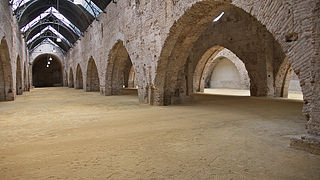
The Seville Shipyard is a medieval shipyard in the city of Seville that operated from the 13th to the 15th century. Composed of seventeen naves, the building was connected to the Guadalquivir River by a stretch of sand.
45. Torre de los Perdigones
The Torre de los Perdigones is a tower that was part of the old factory of "San Francisco de Paula", popularly known as "Fábrica de Perdigones", located on Resolana Street, in the San Gil neighborhood of Seville next to the Puente de la Barqueta, the main access to Expo'92.
46. Parque del Alamillo
Alamillo Park is a metropolitan park located between the town of Santiponce (Sevilla) and Seville, Spain. The park is scheduled to begin an expansion that will make it one of Spain's largest urban parks, reaching 120 hectares in the summer of 2013.
47. Iglesia del Sagrado Corazón de Jesús
The Church of the Sacred Heart of Jesus is located in Seville. It was the church of the old Colegio de San Francisco de Paula, of the minimums, between the sixteenth century and the beginning of the nineteenth century. Since 1887 it has belonged to the Jesuits.
Wikipedia: Iglesia del Sagrado Corazón de Jesús (Sevilla) (ES)
48. Andalucía de los Niños
The Children's Andalusia is a small enclosure with models of some of the main monuments of Andalusia, created for the Universal Exhibition of 1992. It is located on the Isla de la Cartuja in Seville, Spain.
49. Basílica de María Auxiliadora
The Basilica of Mary Help of Christians is located in Seville. It is from the seventeenth century. He belongs to the Salesians. The Archconfraternity of Mary Help of Christians Crowned and the Brotherhood of the Trinity have their headquarters there.
50. Fuente de las Ranas
The Fountain of the Frogs is an urban fountain in Spain located in the María Luisa Park in Seville, it is the oldest fountain in the entire enclosure, dating from 1914, when what used to be the San Telmo gardens began to become a park.
51. Parque Vega de Triana
The Vega de Triana Park, also called Charco de la Pava Park, is a public park in the city of Seville, located next to the Guadalquivir River and west of the Triana Defense Wall. This Defense Wall was designed to stop flooding.
52. Iglesia de San Bernardo
The church of San Bernardo is a Catholic temple that is located in Seville, in the neighborhood of San Bernardo, in the Nervión district, outside the city walls. It was included in the General Catalogue of Andalusian Heritage in 1992.
53. puerta Real
The Puerta Real, called until 1570 as Puerta de Goles, was one of the gates of the walled enclosure of the city of Seville (Andalusia). It was located at the confluence of the calles de Alfonso XII, Gravina, Goles and San Laureano, and today only is it a cloth of the wall on which it was based, in which there is embedded a stone that was part of the gate.
54. Capilla de Nuestra Señora de la Piedad
The Chapel of La Pietà is a Catholic building located at 13 Adriano Street in the Arenal neighborhood, in the town of Seville, Andalusia, Spain. It is the headquarters of the Brotherhood of Baratillo.
55. Iglesia de San Luis de los Franceses
The Church of Saint Louis of France, located in the historic district of Seville, Spain, represents an example of Baroque architecture in the 18th century. The church was designed by the architect Leonardo of Figueroa and constructed between 1699 and 1731 on behalf of the Jesuits. Following the expulsion of the Jesuits from Spain in 1835, it had different uses and was eventually deconsecrated. The building currently belongs to the Provincial Council of Seville.
56. Convento de Santa Isabel
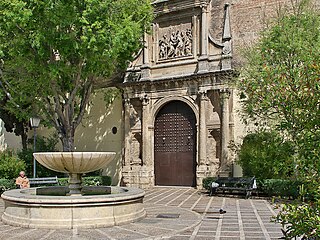
The convent of Santa Isabel is a convent of the Congregation of Philippian Religious Daughters of Mary Sorrowful that is located at number 2 Hiniesta Street, giving its south façade to the Plaza Santa Isabel, in Seville. It is located in the historic centre of the city of Seville and very close to another of the great Sevillian convents, the Convent of Santa Paula.
57. Plaza de América

The Plaza de América, located in the Parque de María Luisa, was built by architect Aníbal González for the Ibero-American exhibition of 1929. The Plaza is flanked by three buildings, also built by González for the exhibition, in three distinct architectural styles: the Museum of Popular Arts (Neomudéjar), the Archaeological Museum (Neo-Renaissance), and the Royal Pavilion (Gothic).
58. Iglesia de San Hermenegildo
The Church of San Hermenegildo in Seville is a seventeenth-century temple in the northern part of the walls, next to the Puerta de Córdoba. In it there is a room where it is said that San Hermenegildo suffered imprisonment.
59. Monumento a Simón Bolivar
The monument to Simón Bolívar is an equestrian statue that represents the Venezuelan soldier and politician Simón Bolívar (1783-1830), and is located on the Paseo de las Delicias in the city of Seville. It is the work of Emilio Laiz Campos and was inaugurated in 1981 by Juan Carlos I of Spain and Sofia of Greece, with the presence and words of former Venezuelan President Rafael Caldera.
60. Monumento a Juan Pablo II
The monument to John Paul II, is a bronze statue on pedestal located in the Plaza Virgen de los Reyes de Sevilla, Andalucía, Spain. The monument is a gesture from the city to John Paul II, who visited Seville in 1982, in the beatification of Ángela de la Cruz, and in 1993, when to close the XLV International Eucharistic Congress.
Wikipedia: Monumento a Juan Pablo II (Sevilla) (ES), Website
61. Convento Santa María de Jesús
The convent of Santa María de Jesús is a religious establishment, of the order of the Poor Clares, founded in 1502 and located on Calle Águilas in Seville. Its founder was Jorge Alberto of Portugal and his wife Felipa Melo. For its establishment they brought Marina de Villaseca, patron saint and founder of the Convent of Santa Isabel de los Ángeles de Córdoba.
62. Capilla de Montserrat
The Chapel of Montserrat in Seville is a religious building of Catholic worship located in the historic center of the city. It is the headquarters of the Brotherhood of Montserrat, a corporation that carries out an annual procession in the afternoon and evening of Good Friday.
63. Torre Abd el Aziz
The Tower of Abd al-Aziz is a hexagonal-shaped Almohad tower located in the Andalusian city of Seville, Spain. It was one of the vertices of the city wall, which linked with the walls of the palaces in that area, such as the nearby Real Alcázar. It has also been called the Tower of Homage, but not because it is the central tower of a great fortress, but because of a legend, not historical reality, which says that this was the first place where the Castilian banner flew after the conquest of the city in 1248.
64. Iglesia Nuestra Señora de la O
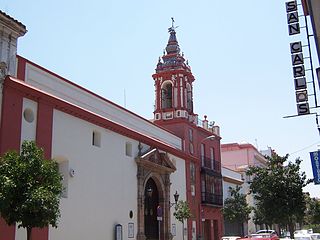
The church of Nuestra Señora de la O is a Roman Catholic church located on Calle Castilla, in the neighborhood of Triana, Seville, Andalusia, Spain. It is the headquarters of the Brotherhood of the O.
65. Monumento a La Raza
The Monumento a la Raza is an outdoor marble monument in the city of Seville, Andalusia, Spain. It is installed along María Luisa Park. It was inaugurated on 12 October 1929—the Día de la Hispanidad. It has written part of the 1905 poem "Salutación del optimista", written by Nicaraguan poet Rubén Darío (1867–1916).
66. Foro de la Biodiversidad
The Biodiversity Forum is an environmental and scientific dissemination centre located in Seville, the result of a joint initiative of the Spanish National Research Council (CSIC) and the Biodiversity Foundation. Through the use of new communication technologies, it is a sustainable option for the exhibition of content that encourages citizen debate on biodiversity, its value, the threats that loom over it and actions to stop its deterioration. Located in the Patio de Banderas of the Royal Alcazar of Seville, it offers exhibitions, film sessions, conferences and live connections with Doñana, among other activities. The centre, which opened in June 2009, has approximately 20,000 visits per year.
67. Estación de Autobuses Plaza de Armas
Plaza de Armas is an international bus station of the city of Seville. It is located at the intersection of the avenue Cristo de la Expiración and Torneo St., in the district of Casco Antiguo. It was opened in 1992.
68. Iglesia de Nuestra Señora de la Paz
The hospital of Nuestra Señora de la Paz in Seville, also known as the asylum of San Juan de Dios, is an old hospital whose construction began in the sixteenth century, it is listed as an Asset of Cultural Interest. It is located in the center of the city, with facades to the Plaza del Salvador and Calle Sagasta.
Wikipedia: Hospital de Nuestra Señora de la Paz (Sevilla) (ES), Website
69. Casa de Murillo
The Casa de Murillo is a historical house in Seville, Andalusia, Spain, at number 8, calle Santa Teresa, in the historic Barrio de Santa Cruz. It was the home of the painter Bartolomé Esteban Murillo (1617–1682) in the latter years of his life. The building has two storeys and a central patio (courtyard) with columns.
70. Palacio del Marqués de la Motilla
The palace of the Marquis of La Motilla appears in the heart of the historic centre of Seville as if it were a medieval construction, at the confluence of Calle Laraña with Calle Cuna in the Old Town. The project was carried out between 1921 and 1924 and was completed in 1931. The property, which was owned by the Marquis of Valencina y de la Motilla, was acquired by a businessman from Cordoba in 2022.
71. Monumento a Pastora Imperio
The Monument to Pastora Imperio is dedicated to this artist of flamenco and cinema of the twentieth century. It is the work of the sculptor Luis Álvarez Duarte and is located at the intersection of Velázquez and O'Donnell streets in Seville, Andalusia, Spain. It was made thanks to the full patronage of the XVIII Duchess of Alba. It was inaugurated in 2006.
72. Casa de los Pinelo
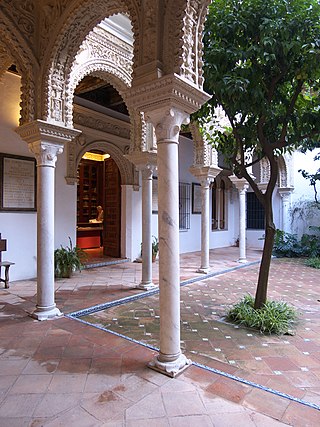
The Casa de los Pinelo is a Renaissance-era building located in the centre of Seville in Spain. It houses both the Real Academia Sevillana de Buenas Letras and the Real Academia de Bellas Artes de Santa Isabel de Hungría. It is named after one of its former owners, Francisco Pinelo, a wealthy merchant.
73. Iglesia Santa María la Blanca
The Church of Santa María la Blanca is located in the San Bartolomé neighborhood of the district of Casco Antiguo in Seville. It was built in the 17th century. It is the headquarters of the Brotherhood of the Rosary of Our Lady of the Snows.
74. Iglesia de San Buenaventura
St. Buenaventura's Church is situated in the calle Carlos Cañal in the Casco Antiguo of Seville, Andalusia, Spain. It was the church of the Franciscan College of San Buenaventura that was destroyed in the 19th century.
75. Monumento a Martínez Montañés
The monument to Martínez Montañés is an urban sculpture that is located in the Plaza del Salvador, in Seville, Andalusia, Spain. It is dedicated to the Jienense sculptor Juan Martínez Montañés (1568-1649), which was established in the city and became one of the greatest exponents of the Sevillian sculpture school.
76. Monumento a Catalina de Ribera
The monument to Catalina de Ribera is located on the promenade of the same name in the city of Seville, Andalusia, Spain. It is from 1921 and was designed by Juan Talavera y Heredia. It consists of two several frescoes, a tile with a portrait of Catherine and a bas-relief from the sixteenth century. At the base of the monument there is a fountain.
77. Castillo de San Jorge
The Castle of San Jorge was a medieval fortress built on the west bank of the Guadalquivir river in the Spanish city of Seville (Spain). It was also used as headquarters and prison for the Spanish Inquisition. It was demolished in the 19th century and made into a food market. A museum in the underground ruins focuses on the history of the castle, the Spanish Inquisition and of religious repression. Next to the food market in the Barrio de Triana, the Alley of the Inquisition, which was part of the fortifications, now connects Castilla Street with the Nuestra Señora de la O Walk.
78. Postigo del Aceite
The Postigo del Aceite, known in Muslim times as bab al-Qatay, is, together with the Puerta de la Macarena and the Puerta de Córdoba, the only three accesses that are preserved today, although transformed, of those that had the walls of Seville, Andalusia, Spain.
79. Monumento a la Tolerancia
The monument to tolerance is a monumental sculpture located in Seville (Spain) made by the sculptor and painter Eduardo Chillida (1924-2002), financed by the Friends of Sefarad Foundation, and which is installed on the salt spring, together to the Paseo de Colón, the Puente de Triana and the Guadalquivir River. The monument was inaugurated in 1992, coinciding with the celebration of the Universal Exhibition of Seville.
Share
Disclaimer Please be aware of your surroundings and do not enter private property. We are not liable for any damages that occur during the tours.

